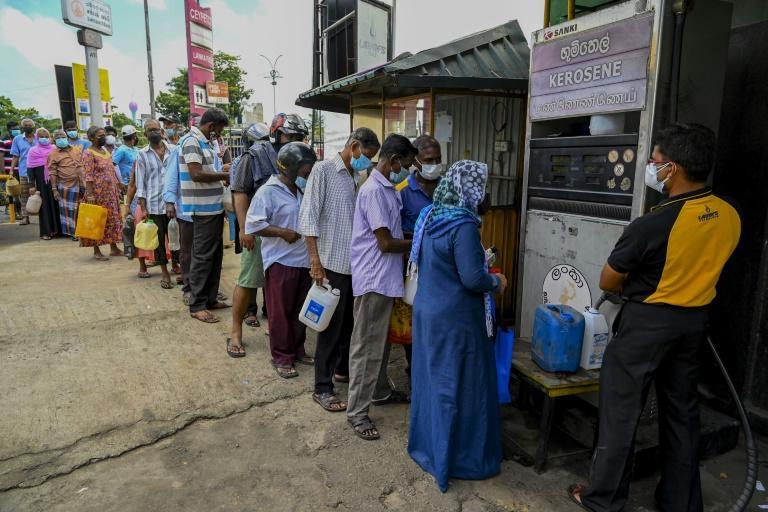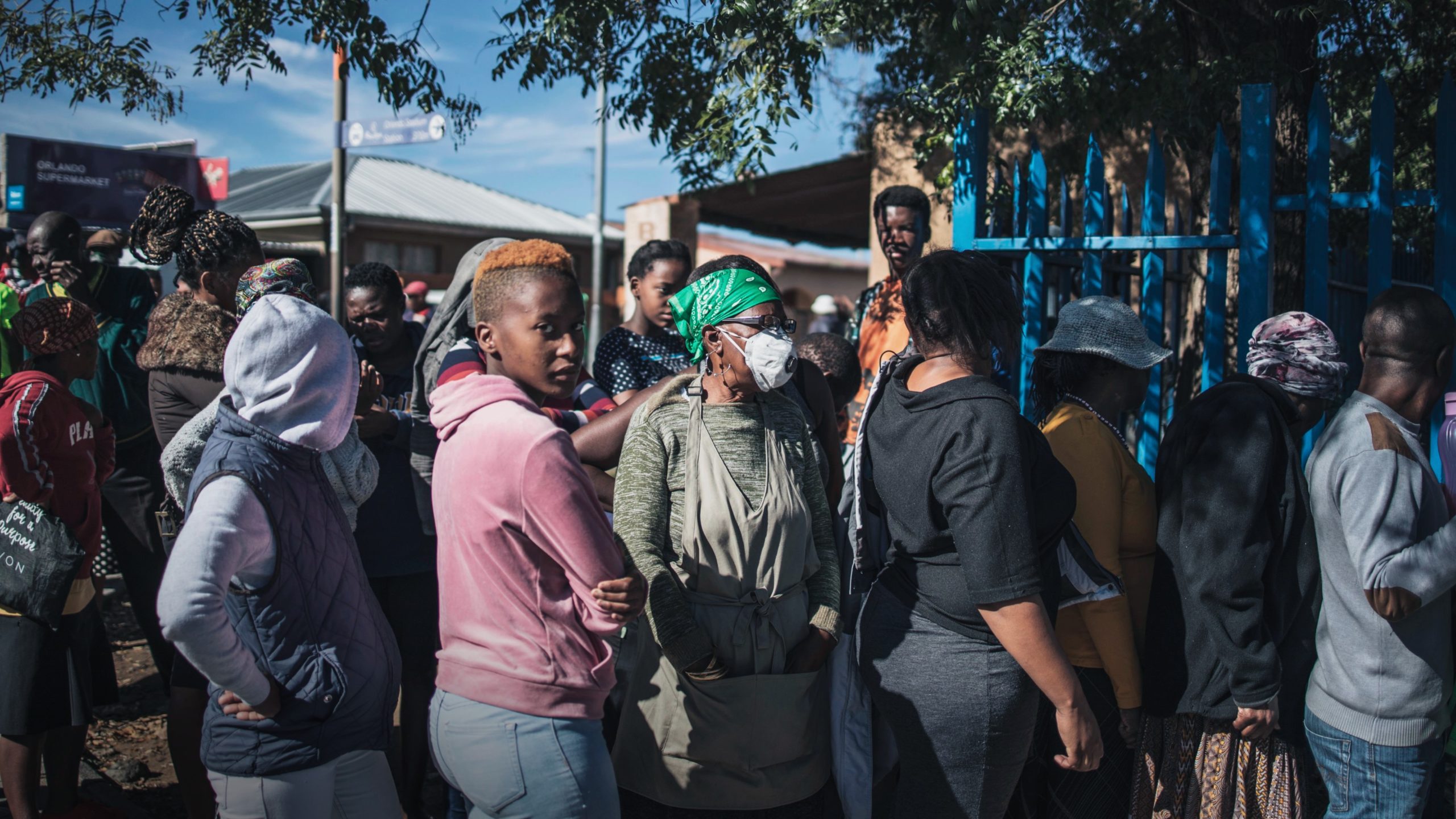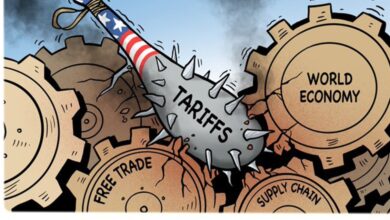Which countries will follow the same crisis as Srilanka in 2022?

Which countries will follow the same crisis as Srilanka in 2022?
The 1980s marked the greatest of times in the entertainment and fashion industry. It was when the term ‘extreme fashion’ came into existence. The era was widely celebrated for a majority of reasons. However, the case was not at all similar in Latin America. 
The people of Latin America shared a different opinion about the 80s. It was during this decade that they had to face severe financial turmoil bringing many people back to the streets. This situation became prevalent as a ‘Debt Typhoon’.
What was the main reason behind this debt crisis? What triggered it?
Splurging price of oil. The main reason was the skyrocketing oil prices. This led to a deficit in their reserves and completely degraded their finances. The foreign debts soared to a significant figure. Consequently, this led to the collapse of their economy.
The huge financial turmoil was first exhibited by Mexico. The country declared in 1982 that it would not be able to pay its financial debt. Following Mexico, many countries have raised their hands to the debt crisis, including Argentina, Chile, Brazil, and many others.
The consequence of the economic crisis was devastating. The countries fell in the hands of the high inflation rate, unemployment, economic growth at a slower pace, and increasing debt.
Three decades on, the world is facing the same situation. Is history repeating itself?
Reports state that the developing countries are trying to cope with the sovereign debt crisis. One of the countries has already given up on the situation- Sri Lanka. Its economy has completely collapsed with expanded debt and depleting foreign reserves. The peasants are devoid of the money to afford their necessities. 
The citizens are blaming the Rajapaksa Government for mishandling the finances of the country. Allegations were made stating that the Rajapaksa government had spent more than the national income and allowed deep tax cuts, which completely ruined the economy.
The global factors have also affected the dire situation of the economic crisis. One of the crucial factors is pandemically induced slow down in which the country could not earn most of its revenue from the tourism industry. The growing cost of borrowing and Russia’s invasion of Ukraine were some of the factors that added to the severity of the situation. Russia’s invasion has significantly resulted in the surging prices of fuel and food.
The threatening statement is ‘The situation in Colombo can mutate.’ It can be an early indicator of potential failure for developing countries.
Evidence points out that the World Bank had already warned about the debt crisis for developing nations before the war between Russia and Ukraine broke out on February 15. In addition, the world bank gave out a list of seventy low and middle-income countries facing debt repayments of around 70 million dollars. The reports predicted that this burden could collapse their economy in 2022.
A short while after, the Russian Invasion resulted in the disruption of the supply market, threw financial markets into disorder, and triggered a global oil crisis. The economic consequences of the war became alarming for many countries.
Reports were released in March with the United Nations warning 107 countries of ‘severe exposure to the consequences of the Ukrainian war. These countries seemed to possess one of the three following risks, including rising food prices, rising fuel prices, or complicated financial conditions.
The risk enveloped around 1.7 billion people from 107 countries. It contributes overall to the 1/5th part of humanity. Out of the 107 countries, Reports show 69 countries to possess all three threats: food, fuel, and finances.
Statistics show that the 69 countries could have similar consequences as Sri Lanka is currently facing. Out of these 69 countries, 19 countries belong to Latin America, 25 countries are in Asia- Pacific and 25 countries are in Africa.
Countries Which May Follow the Same Trajectory as Sri Lanka?
1. Egypt:
The country is commonly regarded as the land of Pharaohs. The country is already facing harsh financial conditions. The country is the largest importer of wheat, its crisis worsened because of the war between Ukraine and Russia. Currently, Egypt is facing a budget deficit of around 20 billion USD, debt to GDP ratio of 85 percent, and high prices for the essentials which are being imported.
It has been recorded that the food prices have surged up to 11 times, and the Lebanese pounds have lost 90% of its current value.
The Ukrainian war severed the situation because of food insecurity fears. There was an acute shortage of essential commodities, including sunflower oil, wheat, etc.
To cope with the economic crisis, Lebanon was forced to take a whopping amount of 150 million USD from the World Bank to ensure food security for its people.
2. Argentina:
The country is famously referred to as the land of Tango. But, the government is caught up on the wrong foot as inflation paralyses the society, and external debt is skyrocketing. The country has defaulted on debt repayments for nine terms, and to overcome the tenth default, the lawmakers have approached the IMF for financing 45 million USD. It may provide Argentina with some relief but will not completely overcome the severe economic crisis. 
Recently, Argentina has experienced the appointment of the new Finance Minister to overcome the trenches of the financial crisis. The people have experienced the price of commodities soaring dramatically.
The newly appointed economy minister, Silvina Batakis, has already made plans to cut off the country’s high fiscal deficit and adopt the idea of ‘order and balance’ to overcome the surging rates, collapsing markets, and growing pressure on the country’s currency.
3. El Salvador:
The developing country is at risk of an economic crisis. It could be traced back to the loss of around 56 million dollars of digital assets due to gambling. It is a big deal for a financial deficit country like El Salvador.
The country has invested around 105$ million USD for 2301 bitcoins and recorded the investment go down by half, estimating approx 51 million USD.
However, the authority in power, Nayib Bukele, is not admitting his blunder. He is blatantly purchasing more bitcoins without worrying about the country’s future.
4. Peru
The country is under the burden of substantial economic debt. The government is facing hyperinflation in commodities, tumbling bonds, severe food shortages detonating prices, and mass unemployment similar to the circumstances in Sri Lanka.
5. Sub Saharian Africa, including Ghana, Kenya, South Africa Ethiopia:
These countries could take the worst hit possibly. The situation in Ghana is detrimental as the debt reserves are overflowing. An analysis made demonstrates that the debt crisis looks prominent.
In Kenya, the debt has summed to around 70% of the country’s GDP. Additionally, Kenya received about $244 million from the IMF to deal with the economic blowout.
South Africa has a debt of around 80% of its GDP. The energy crisis has drastically affected the economy. The country is undergoing ageing coal plants which contribute to about 90% of the country’s energy supply.
6. Turkey:
The Turkish Statistical Institute has declared that the annual inflation rate has exceeded up to 78.62%, exceeding expectations. Death rates are soaring. The situation is affecting the lives of the citizens. Increasing fares to meet up the fuel costs, the restaurants are introducing wipe-clean menus so that they can update on the prices of the items.
Turkey’s debt is estimated at around 54% of the GDP, followed by inflation to be 70%. GDP growth forecast was cut to 3.3%. Food shortage has resulted in importing food grains from India.
The world bank has beforehand declared that almost a dozen of developing countries would not be able to pay off their debts. This may prove to be the largest debt crisis in the generation.
Will India face any impact?
As many economies are experiencing a downfall, the impact will be evident in India itself. The state finances are degrading. Statistics show that the debt to GDP ratio in the states of Punjab, West Bengal, Bihar, and Andhra Pradesh is identical to Srilanka, comprising about 52%, 39%, 38.66%, and 38% ,respectively.
Moreover, the Indian Government has expressed its concerns regarding the population. The increasing population may ruin the dynamics of their economy. This will ultimately lead to the mirror image of Sri Lanka.
The whole world is facing a debt crisis. The national budget has proved to be a sensitive issue. Some governments are cutting expenditures to maintain a balance, and others are borrowing to sustain the lives of their citizens.
In this alarming situation, how will the world overcome the enormous economic disaster?
Many experts have affirmed that the decisions need to be taken collectively. The government can do it by managing the finances better. Effective plans should be made in terms of borrowing and lending. The creditors should offer contingency plans to borrowers as well as plans to pause repayments if the borrower land in financial holes.
Studies have shown that low-income countries are more prone to external crises. So, the government must introduce better plans to manage shocks. The country should opt for a mechanism to overcome unsustainable debt issues.
Another method to overcome the financial burden is to expand the common framework’s eligibility criterion. For example- the G20 framework may help to restructure the poor countries’ debt issues, and this has been implemented in 73 poorest countries of the world. The framework must be expanded to include most of the developing countries under its shade.
Furthermore, the government must promote alternatives to borrowing. Improving the tax collection could help in decreasing the probability of borrowing.
Debt Crisis in the developing economy is a security issue that affects all tiers of society.The consequences can be drastic and can not be undone easily.Thus, preemptive action is necessary to overcome the situation.
If anything, the pandemic has taught us, that any crisis can have a domino effect, and its severity could amplify if the issue is not taken properly.A small event can start an unstoppable chain reaction.No one can predict when the financial turmoil will finally stop.
edited and proofread by nikita sharma




